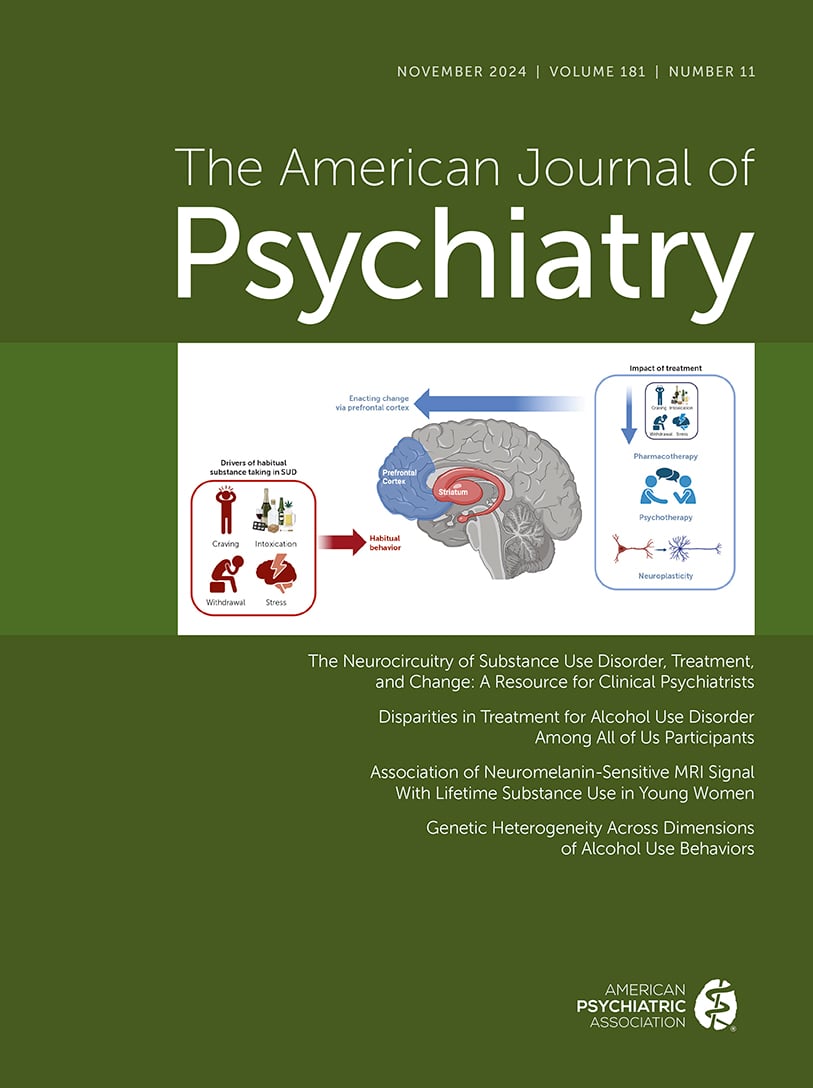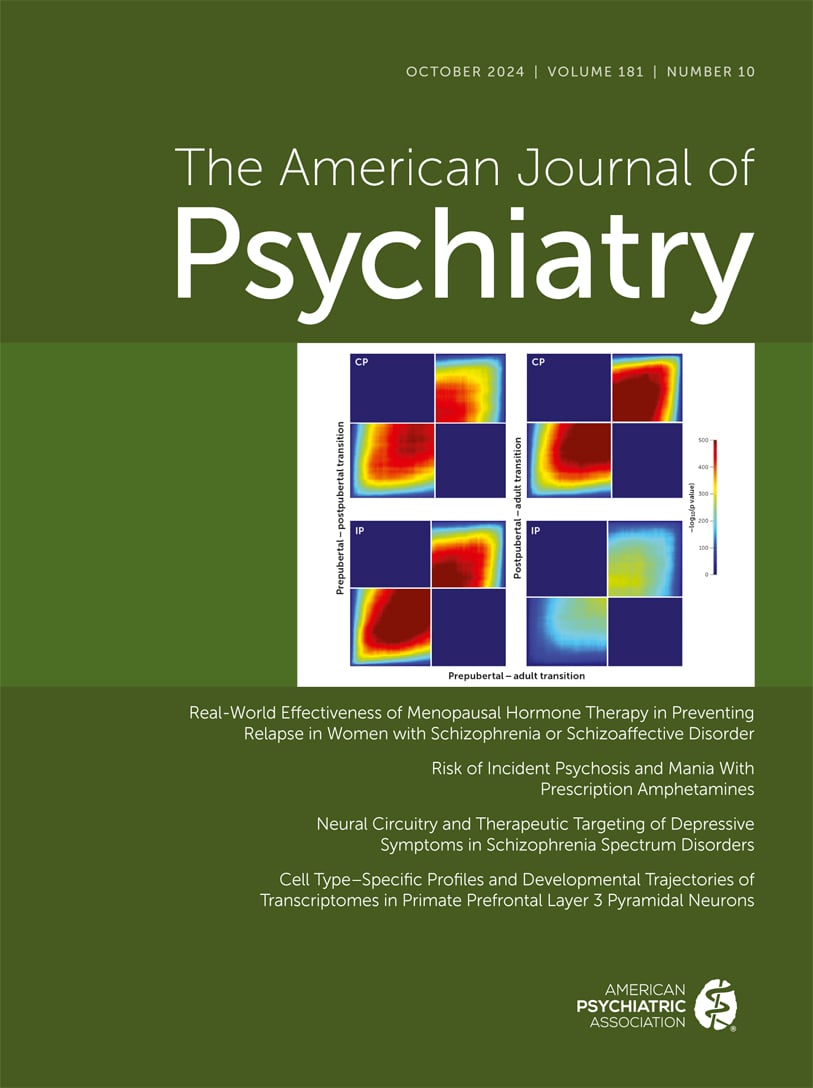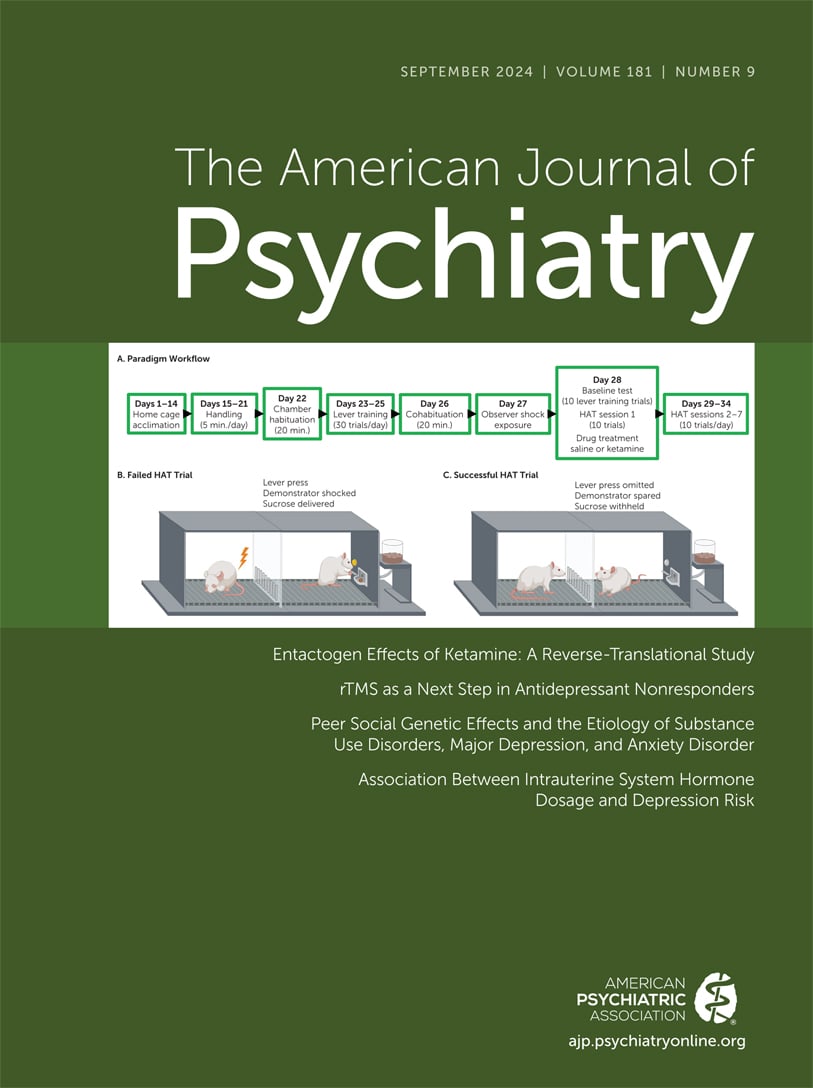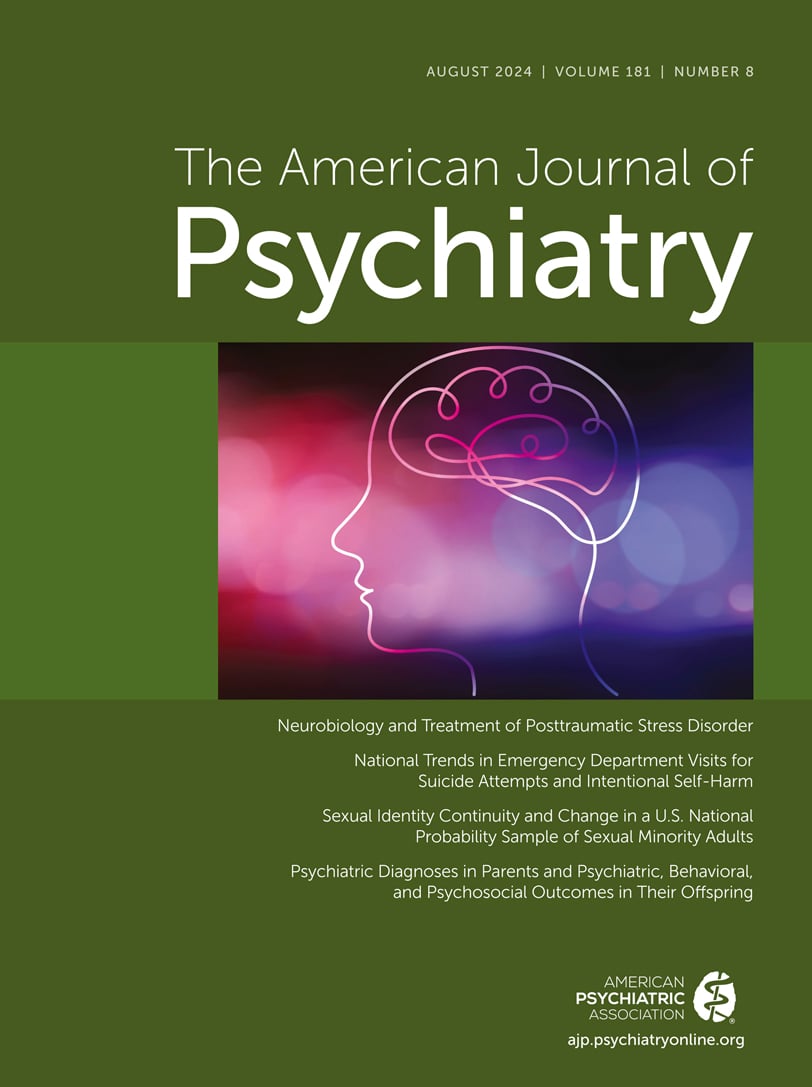American Journal of Psychiatry
- Volume 102
- Number 3
- November 1945
Article
Publication date: 01 November 1945
Pages289–2931. Selective sterilization as a prophylactic measure for the prevention of mental defect has been employed in varying degree in various states. 2. Though the ratio of total sterilization to the estimated population is not a wholly satisfactory basis for ...
https://doi.org/10.1176/ajp.102.3.289Publication date: 01 November 1945
Pages294–298Electroencephalographic study of 452 criminals and 1,432 control subjects reveals that when age factors and sampling errors are controlled there are no significant differences between the two groups. Since the EEG is a fairly reliable indicator of ...
https://doi.org/10.1176/ajp.102.3.294Publication date: 01 November 1945
Pages299–300A table is presented showing the relationship of EEG before treatment to outcome of electric shock therapy, in 187 schizophrenics, of whom 95 percent were young men. One-fourth of those with a normal pattern left the hospital much improved or "quiescent." ...
https://doi.org/10.1176/ajp.102.3.299Publication date: 01 November 1945
Pages301–304In a study of the EEGs (between attacks) of a selected group of 229 patients subject to "fainting spells" and "dizzy spells" the following observations were made: 1. In patients subject to typical "fainting spells," the incidence of EEG. abnormality (11 ...
https://doi.org/10.1176/ajp.102.3.301Publication date: 01 November 1945
Pages305–310Electroencephalography was performed in 92 military and selective service convulsive and non-convulsive problems. Of 20 subjects with a history of convulsion during military service observed by other than medical personnel, the EEG was abnormal in 10 (50%)...
https://doi.org/10.1176/ajp.102.3.305Publication date: 01 November 1945
Pages311–315We have presented some evidence to illustrate an interesting by-product of electric shock treatment. A few days after shock treatment was terminated, a psychotic reaction appeared, differing in its gross clinical manifestations from the clinical picture ...
https://doi.org/10.1176/ajp.102.3.311Publication date: 01 November 1945
Pages316–317The cases cited suggest that premedication in patients with cardiac disease is an effective prophylaxis for the development of cardiac complications. Often where cardiac complications occur they are preceded by various arrhythmias and these may be ...
https://doi.org/10.1176/ajp.102.3.316Publication date: 01 November 1945
Pages318–3241. The galvanic skin response (GSR) elicited by pin prick and light touch was tested in seven patients with organic (traumatic) interruption of the peripheral sensory pathway; in one patient with complete (traumatic) transsection of the spinal cord and in ...
https://doi.org/10.1176/ajp.102.3.318Publication date: 01 November 1945
Pages325–329The detoxifying capacity of the organism during psychoses of the involutional and old age period was investigated by Quick's intravenous hippuric acid test. Seventy-one patients were studied, 48 of whom were 45 years and older; 30 of these were 6o years ...
https://doi.org/10.1176/ajp.102.3.325Publication date: 01 November 1945
Pages337–342The number of cases in this survey is too small to justify any conclusions of a statistical nature. However the results of the survey confirm a number of impressions which we have had in casual contacts with considerable numbers of successful officers and ...
https://doi.org/10.1176/ajp.102.3.337Publication date: 01 November 1945
Pages343–3501. Interviews with several thousand soldiers of the Army Air Forces reveal the development of specific attitudes towards return home, reaction to conditions found on arrival, further military duties, personal situations, and post-war adjustments. 2. One ...
https://doi.org/10.1176/ajp.102.3.343Publication date: 01 November 1945
Pages362–366This article attempts to show an adaptation with modifications, of a total psychotherapeutic push method, as used in a rehabilitation center. The complete value of this method cannot be accurately measured. The results obtained, in terms of successful ...
https://doi.org/10.1176/ajp.102.3.362Publication date: 01 November 1945
Pages367–371One hundred and fifty newly blinded soldiers were given a thorough psychiatric evaluation of their previous civilian and military background and their emotional response to their disability. Of this number, 59% were found to be well adjusted to their ...
https://doi.org/10.1176/ajp.102.3.367Publication date: 01 November 1945
Pages378–3841. A brief review of the literature concerning the central nervous system involvement in morphinism is presented. Although there are scattered clinical and pathological reports which indicate that acute and chronic residuals may result, no consistent ...
https://doi.org/10.1176/ajp.102.3.378Publication date: 01 November 1945
Pages385–394On the basis of our findings we consider that the manic excitements, the depressions and the anxiety states are related in terms of the degree of facilitation and inhibition which is present. In all three the total tensional level is raised but in the ...
https://doi.org/10.1176/ajp.102.3.385Publication date: 01 November 1945
Pages395–398A patient suffering with manic-depressive psychosis, depressed type, the diagnosis being based upon the history of repeated cyclothymic depressions with typical symptomatology and complete recoveries with remissions free from symptoms, attempted during a ...
https://doi.org/10.1176/ajp.102.3.395Publication date: 01 November 1945
Pages403–405This note stresses the value of apomorphine as a sedative in the agitation and excitement accompanying certain psychiatric illnesses. The dosages, indications, contraindications and complications are discussed.
https://doi.org/10.1176/ajp.102.3.403Past Issues
View Issues Archive
Vol. 181 | No. 11

Vol. 181 | No. 10

Vol. 181 | No. 9
